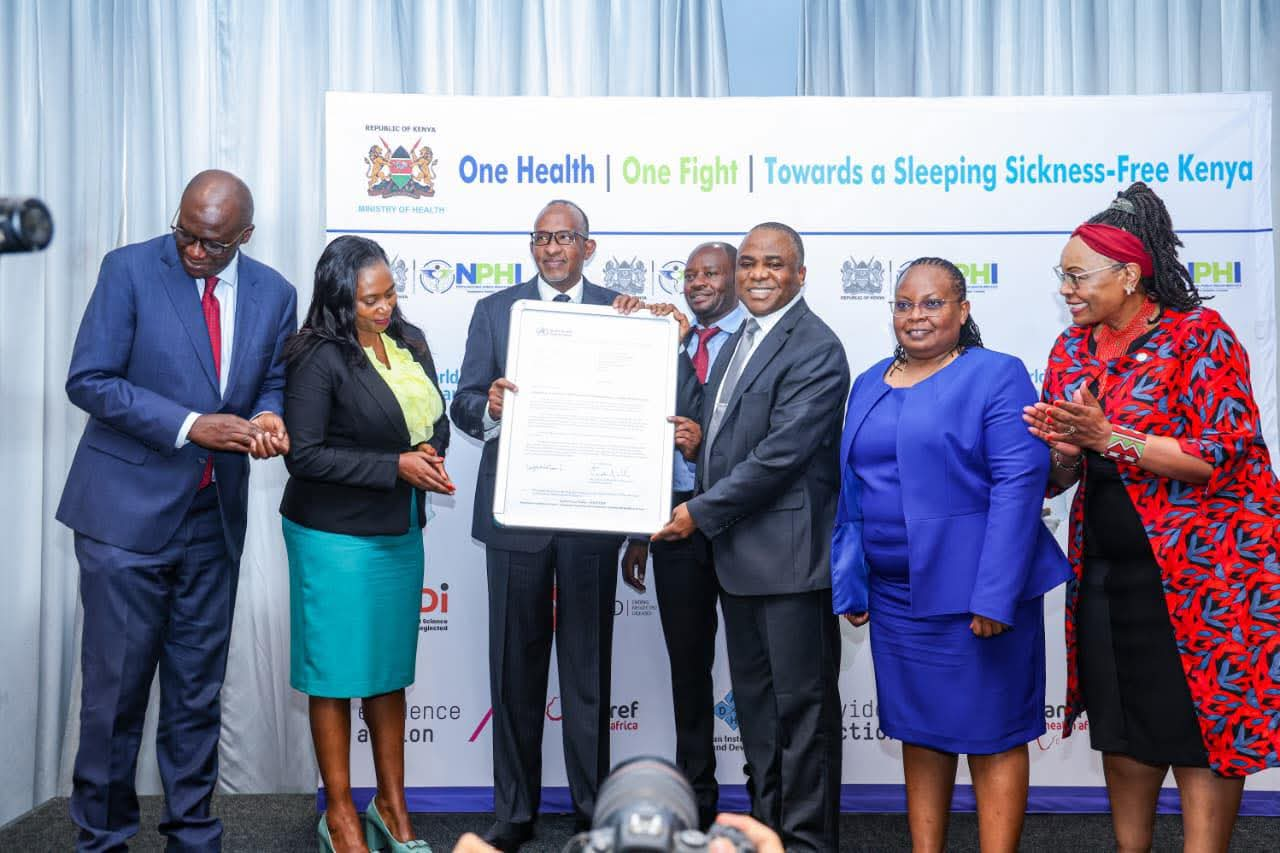When sleeping sickness first emerged in Kenya in the early
1900s, it arrived as a mystery wrapped in fear.
There were many sleeping sickness patients, bitten by a
tsetse fly, a very small fly carrying the parasite that steals people’s
consciousness.
Families watched their loved ones sleep slowly and gradually
into coma, and many of them actually died. It was called sleeping sickness.
Communities lived under the shadow that they could not
really fully understand, nor effectively combat.
Despite the fear and confusion, Kenya refused to surrender.
More than 100 years later, what was once considered an inevitable burden has
now become a conquered challenge.
Kenya has now been validated by the World Health
Organisation (WHO) as having eliminated human African trypanosomiasis (HAT) or
sleeping sickness as a public health problem, making it the 10th country
to reach this important milestone.
On June 16, 2025, Kenya received official validation from
WHO following a rigorous external expert review.
“I congratulate the government and people of Kenya on this
landmark achievement. Kenya joins the growing ranks of countries freeing their
populations of human African trypanosomiasis. This is another step towards
making Africa free of neglected tropical diseases,” WHO Director General Dr
Tedros Adhanom Ghebreyesus said.
According to the Kenya Tsetse and Trypanosomiasis
Eradication Council (KENTTEC) CEO Dr Seth Onyango, sleeping sickness was first
recorded in Kenya in 1901 through the Kenya Uganda border,and by 1910, it had
spread 25 miles inland along the Kuja and Migori rivers and their tributaries.
The first case was defected in Lambwe valley through human
and livestock movement likely from Samia-Siaya HAT focus.
The largest outbreak in Lambwe valley in 1964 led to the
first aerial spraying to control tsetse fly that spreads the disease.
“This triggered intensive control activities which included
aerial and ground spraying of insecticides in the tsetse fly habitats,” Onyango
said.
To combat the disease, more targeted methods were deployed,
including bush clearing, use of herbicides, ground spraying with herbicides and
mass treatment of livestock with trypanocides.
However, an upsurge in cases was witnessed between 1980 and
1984 in Lambwe valley, leading to sustained aerial and ground spraying.
“Despite these interventions, Lambwe Valley sleeping
sickness focus remained active but with reduced incidence of below 50 cases
annually up to 1988,” he said.
The country shifted from conventional tsetse fly control
methods to more technologically improved tools.
These included insecticide treated, odour baited target
screens being installed in Lambwe Valley and deployment of odour baited traps
to trap out tsetse flies, thus leading to incidence reduction in the valley to
zero.
With the WHO validation, Kenya needs to put in place various
measures to ensure the gains made are not lost.
These include implementation of post elimination
surveillance to ensure detection of any resurgence of cases, ensure quality
health services are available for any affected individuals and tsetse fly control must continue to
suppress the vectors beyond the endemic zones.
“We must bear in mind, sleeping sickness has not been
eradicated. It has been eliminated as a public health problem. This difference
matters. It means it is no longer a disease that spreads from people to people
in the community, but it is still there across a few individuals,” Dr Adiele
Onyeze said.
Dr Onyenze is an Neglected Tropical Diseases (NTD) and
strategic management expert with the WHO.
“History has taught us many lessons, some of them harsh.
Some countries that have celebrated too soon realised too quickly and watched
sleeping sickness return. Complacency is the enemy of elimination. Success
demands real continuous vigilance.”
According to the Amref Health Africa Country Director Dr
Meshack Ndirangi Wanjuki, the achievement gives immense hope showing that it is
possible to relieve the suffering of the most vulnerable in society by
eliminating NTDs that affect them.
He acknowledged the importance of One Health approach and
strategy of integrating human health, animal health and planetary health.
This, he said, includes strong collaboration between the
Ministry of Health, livestock and agricultural sectors.
He said the approach will is an essential pathway to
eliminating a lot of diseases that affect humans today, especially in the age
of climate change.
“We recognise and appreciate all the partners who played a
role in scaling preventive chemotherapy in the control of the various neglected
tropical diseases, including elephantiasis, trachoma, intestinal worms,
bilharzia and river brightness,” Ndirangu said.
Health CS Adan Duale said that once endemic in six counties
around Lake Victoria—Busia, Bungoma, Siaya, Homa Bay, Migori, and Narok—sleeping
sickness posed a major threat to approximately seven million Kenyans.
Since 2009, no indigenous cases have been reported.
“This is a testament to our capacity to eliminate neglected
tropical diseases through policy leadership, technical excellence, and
community-driven action,” Duale said.
“The achievement will not only protect our people but also
pave the way for renewed economic growth and prosperity,” he noted.
HAT is a vector-borne disease caused by the blood parasite
Trypanosoma brucei.
It is transmitted to humans through the bites of tsetse
flies that have acquired the parasites from infected humans or animals.
Rural populations dependent on agriculture, fishing, animal
husbandry or hunting are most at risk of exposure.
A total of 57 countries have eliminated at least one NTD. Of
these, 10 (including Kenya) have successfully eliminated HAT as a public health
problem.
The other countries that have reached this milestone are
Benin, Chad, Côte d’Ivoire, Equatorial Guinea, Ghana, Guinea, Rwanda, Togo and
Uganda.
